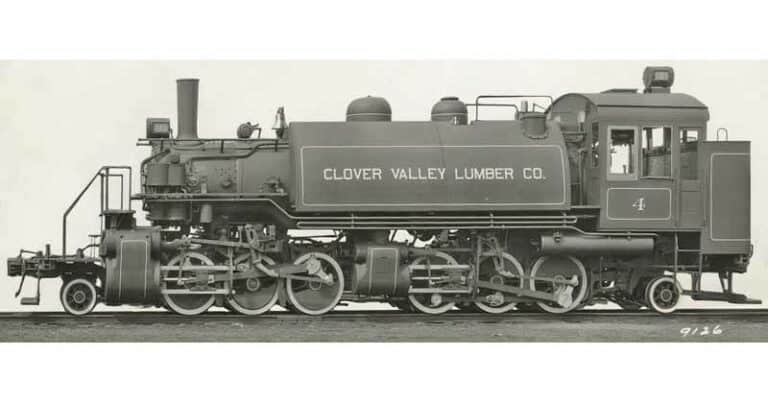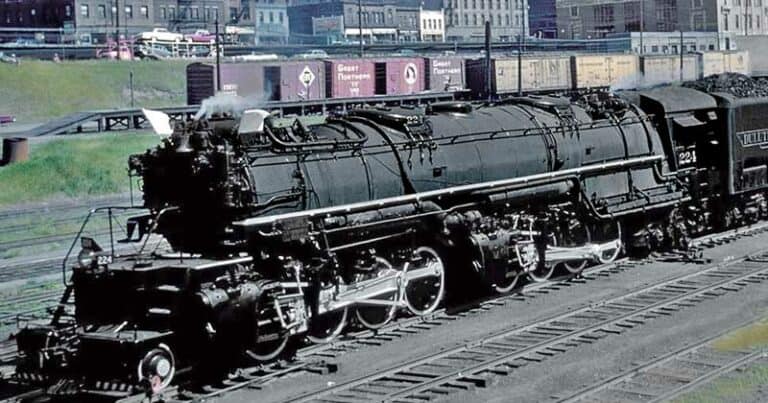Whyte Notation, The Simple way we Classify Steam Locomotives
The United States was 70 years into the steam locomotive revolution and no standard way to classify steam locomotives was being used. As the “American Engineer and Railroad Journal” noted in December of 1900, it was getting mighty confusing, with some locomotives getting several names for what was essentially the same locomotive.

Is New York Central #6013 above a Niagara? Yes it is. Or is it a Northern, or FEF, or Confederation, Dixie, Greenbrier, Pocono, Potomac, Heavy Mountain, Golden State, or a Western, Laurentian, General, Wyoming, Governor, or a Big Apple? The answer is yes. Yes to each of those names. And yet, in each case it is also a Niagara.
“There are too many names…”
F.M. Whyte, a mechanical engineer with the New York Central, came up with a system to identify nearly any steam locomotive using the number of wheels and type of wheel used by the locomotive. It was as simple as it was (nearly) complete. It was adopted almost immediately in the United States. First by associations of railroad engineers and mechanical engineers, then by the railroads themselves.
Named after the inventor of the system, the Whyte Notation spread to Canada, the United Kingdom, Australia and New Zealand which still use the system to classify steam locomotives today. Today Whyte is still used in the UK, Australia and New Zealand and as the North American steam locomotive designation system.
How are steam locomotives classified?
Steam locomotive classification is not difficult. Whyte Notation divides the wheels of a steam locomotive into three sets: the driving wheels, these are the large, powered by steam through cylinders, pistons and linkages, wheels directly under the boiler. And the smaller wheels (if any) in front of the driving wheels, then the smaller wheels (if any) after the driving wheels. Just count the total number of each type of wheel, putting a hyphen between your total number of wheels.
What if there are no wheels before the driving wheels? Or after the driving wheels? This was often the case with early steam locomotives. The “American” type was built in considerable numbers before, during and after the Civil War. The American type has no trailing wheels.
In the Whyte notation if there are no leading or trailing wheels, you just put a zero – 0 – in that spot. So, an “American” type is a 4-4-0. The Whyte Notation is graphically represented with a series of simple, sized, with a correct number of axles, and wheels as seen from the side, as on a diagram.
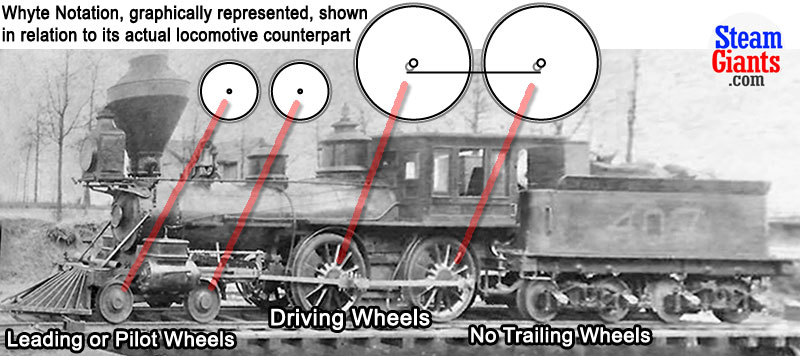
The two locomotives, the General and the Texas, involved in the Great Locomotive Chase, also called the Andrews Raid, during the Civil War were American type wood burners. Both the Texas and the General have been cosmetically restored and are on display.
So…How does it Work?
Let’s go on to a larger, and more modern steam locomotive. Remember, we count wheels, not axles. In this example, we count 2 wheels before the driving wheels, 8 driving wheels and then 2 trailing wheels. This is a 2-8-2 in the Whyte Notation.

A 2-8-2 steam locomotive is a Mikado type. More than 35,000 were built in the United States. In this photo of a Baltimore & Ohio Mikado, you can clearly see the pilot (or leading) wheels, driving wheels and trailing wheels (SOmetimes called “trucks”) as shown in the diagram above. Notice though what the Whyte Notation does not count – the tender’s wheels.

The tender, what some call the “coal car”, is not included in the Whyte Notation for two reasons. 1) It is interchangeable between locomotives. It is not permanently coupled. And 2) Whyte assumes a tender. Only if there is not a tender does this system add a notation.
Whyte Can Easily Accommodate Different Locomotives
If there is no tender, the locomotive is called a “tank” locomotive because it carries its own water (and possibly fuel) in a tank permanently located on the engine. That is noted by appending a “T” to the wheel arrangement. Let’s look at an example that will also show us how an articulated locomotive, a locomotive with 2 (or more) sets of drivers, fits in the Whyte Notation.

We again count wheels (not axles), the only difference being that we now have two sets of powered drivers. Because they are powered separately, by separate pistons and linkages, they are counted separately. So, here we have a 2-6-6-2. In the United States – if used with a tender – this is a Chesapeake type. The most famous Chesapeake type is “the Last Baldwin” #1309, which now steaming on the Western Maryland Scenic Railroad.

What would this same wheel arrangement look like as a tank locomotive in the Whyte Notation? It would be a 2-6-6-2T. And it would look like this Clover Valley Lumber 2-6-6-2T built by Baldwin Locomotive works in 1924 for service in Loyalton, California.
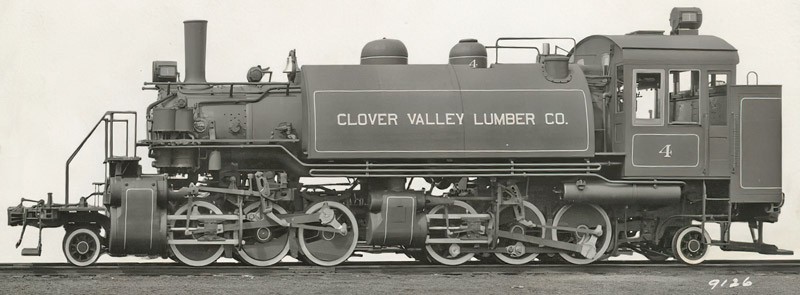
Notice the clear 2-6-6-2 wheel arrangement, including the two separate pistons and pairs of rod linkages for each set of driving wheels. You can’t fail to notice the lack of a tender and the added tank wrapped around the boiler of the locomotive. It’s not actually wrapped all the way around. This design is called a saddle tank. There are two symmetrical tanks hanging off of each side of the boiler.
The tanks hold water, although some tank locomotives have separate tanks that can hold fuel. We do a deep dive into tank locomotives in another article. The small bin on the back of Clover Valley #4 would stock some coal or bunkers of fuel oil. Tank locomotives typically would not stray far from home base, and their fuel source.
Clover Valley Lumber Company #4 is preserved in operating condition at Niles Canyon, read all about it.
Whyte will expand to include almost any wheel arrangement in locomotives, no matter how the steam locomotive itself expands. This is a Virginian “Triplex”, a 2-8-8-8-4 locomotive. It was an experimental locomotive that was an expensive failure.

This experimental leviathan has three sets of powered drivers. Two are under the massive boiler while a third is under the tender. Even though it is under the the tender it is powered by the same steam boiler. This set of drivers would be called powered tender drivers.
Notice though the Whyte Notation for classifying steam locomotives just continues to add up the leading wheels, the driving wheels, separated by sets, and the trailing wheels. Despite being so massive, and experimental, fundamentally this locomotive is the same as each we have looked at and so it fits neatly into the Whyte system.
From these few simple examples you can now figure out where any standard rod-driven steam locomotive fits in the Whyte Notation. It’s a simple system that covers – almost – every locomotive. That’s probably why it was so quickly adopted and has stayed around so long. But you notice I keep saying…almost, or nearly… every steam locomotive.
What Doesn’t Fit into the Simple System
Garratt locomotives can be shoehorned into Whyte Notation, with a bit of a trick. A Garratt locomotive is another massive locomotive. It is an articulated locomotive – with a difference. A Garratt, or as some call it a Beyer-Garratt, is really two separate engines, bridged by a single boiler and cab. It’s difficult to describe, so here’s what we are talking about.

This particular Garratt is two Mountain type locomotives, two 4-8-2 locomotives, back to back, joined – bridged really – by a single boiler and cab. It may be a little difficult to identify the leading, trailing and driver wheels so I have identified them: red is leading and trailing, while blue are the driver wheels.
The trick to keeping the Garratt locomotives in-tune with Whyte Notation is to use a “+” sign to denote the separate engines. So this particular Garratt would be a 4-8-2+2-8-4 in the Whyte Notation. You can have Garratts in nearly any back-to-back configuration.
A double Mikado would be a 2-8-2+2-8-2 while a popular model in Britain was a double Mogul, a 2-6-0+0-6-2. The largest Beyer-Garratt built was a 4-8-4+4-8-4 for the New South Wales Government Railways. One still steams for the Australian Railway Historical Society.
Adding to Whyte with a Letter Suffix
When a steam locomotive is not a traditional piston/rod locomotive with a tender, Whyte adds a suffix to the end of the numbers, to indicate the important difference. We’ve already seen a tank locomotive uses the “T” suffix. In fact, although rarely used, tank locomotives are assigned several suffixes that can expand on what time of tank is being used.
| Letter Suffix | Means… | Example |
|---|---|---|
| (No suffix) | Standard (Tender locomotive) | 2-6-0 |
| T | Side Tank locomotive | 2-6-0T |
| ST | Saddle Tank locomotive | 2-6-0ST |
| WT | Well Tank locomotive | 2-6-0WT |
| PT | Pannier Tank locomotive | 2-6-0-PT |
| CT (or C) | Crane Tank locomotive | 2-6-0CT |
| IST | Inverted Saddle Tank | 2-6-0-IST |
| T+T | Tank locomotive+Tender | 2-6-0T+T |
Other steam locomotives can also be accommodate with an explanatory letter suffix. Many of these type of locomotives are used in industrial or underground mining applications.
| Letter Suffix | Means… | Example |
|---|---|---|
| F | Fireless locomotive | 2-6-0F |
| CA | Compressed Air | 2-6-0C |
| R | Rack Locomotive | 2-6-0-R |
| G | Geared locomotive | 0-4-4-0G |
And now we run into Trouble
In the United States there were no Garratts built or used. In fact, there were very few used in the Western Hemisphere. The Garratt was designed for railroads that needed a lot of power, but didn’t have a lot of sturdy infrastructure.
In the United States there was a need for that combination too. But not for long distances, and the need was for much shorter engines. The “New World” was covered in trees, coast to coast, to the top of every hill and mountain. Getting to those trees was a challenge. Getting them out of the forest and off the mountain was an even bigger challenge.
Ephraim Shay, seeing the need in the local logging industry in Michigan, was the first to design and build a successful geared locomotive. His Shay locomotive, later built by the Lima Locomotive works, would out produce all other builders of geared locomotives, but there were other significant builders.
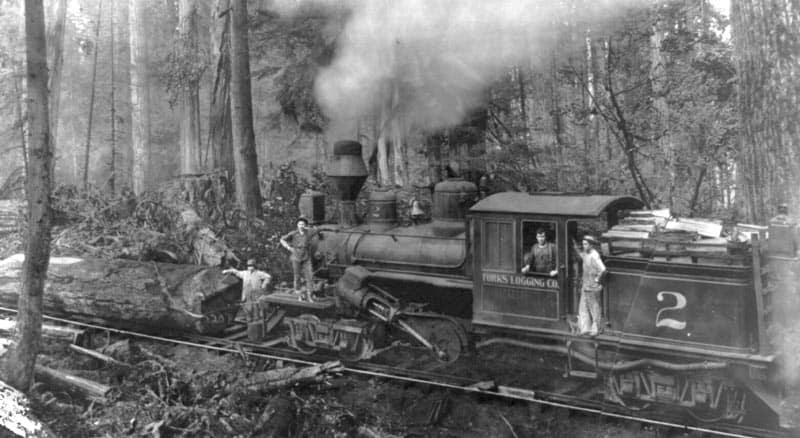
So in America the geared locomotive became an important tool for railroads small and large. Gear reduction makes the small locomotives very powerful, and very slow. They were also quite nimble. They often had to traverse very steep grades, as much as 12%, and sometimes temporary track.
It’s all too much and not enough at the same time
A geared locomotive is steam powered, but it uses steam in a much different way to get the locomotion. Every wheel is powered. In a terribly simplified description, the steam power is transferred to the wheels from cylinders and pistons via crankshafts and driveshafts and directly to the wheels by a series of gears.
The gears, drive shaft and crankshaft will be located differently and connected to the wheels differently depending on the manufacturer and design. So geared locomotives are a very different design that the standard pistons, rod and linkages design.
Geared locomotives just don’t fit into Whyte. And there is no good way to shoehorn them in. As part of the Whyte system a G suffix is set aside for use with geared locomotives. However the nice, tidy series of numbers that Whyte uses just can’t work with geared locomotives.
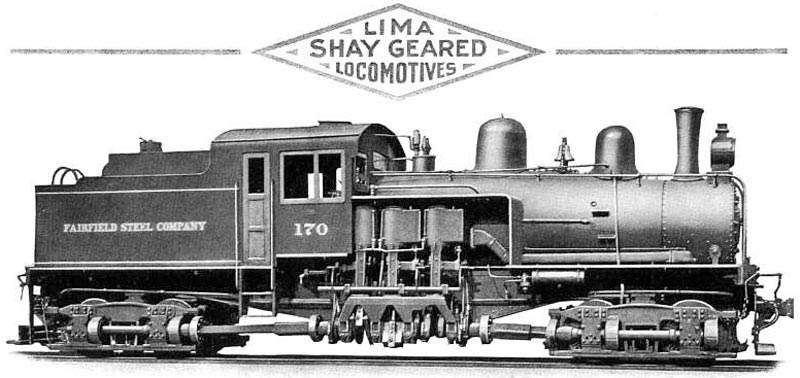
Geared locomotives are the Shay, Climax and Heisler locomotives of our world. They don’t have pilot or leading wheels or trailing wheels either. So in Whyte Notation every geared locomotive would look something like this: 0-4-4-0G.
What makes that extra unhelpful is that geared locomotives by the different builders are geared in completely different ways. A 0-4-4-0G Shay is a radically different beast than a 0-4-4-0G Heisler, which is powered much differently than a 0-4-4-0G Climax.
So in the field, when mechanical and shops crews worked on these geared locomotives, the Whyte Notation just went out the window in favor of calling a Shay a Shay, a Heisler a Heisler and Climax a Climax. As simple as it is, occasionally, as with geared locomotives, the Whyte Notation steam locomotive nomenclature just gets in the way.
Europe, why not? What do you have against Whyte?
After flirting with the Whyte Notation system, the continent went their own way, led by Germany. But why? The United Kingdom and North America, both major locomotive builders for Europe, used the simple Whyte Notation.
Well, true to the German stereotype, German mechanical engineers found the system too simple. How can you tell, with the Whyte Notation system, how any leading or trailing wheels are used, and how they relate physically to the driving wheels. You can’t. A Union Pacific Big Boy, currently the largest steam locomotive operating in the world, in Whyte Notation is a 4-8-8-4. In Europe it would be (2′D)D2′ h4.
UIC stands for International Union of Railways, although UIC Notation is sometimes called German Notation since it originated there. UIC Notation takes into account many, many factors about a locomotive. A large, heavy tank switcher would be a 0-8-8-0T in Whyte Notation, but in UIC Notation it could be a D′Dh4vtG.
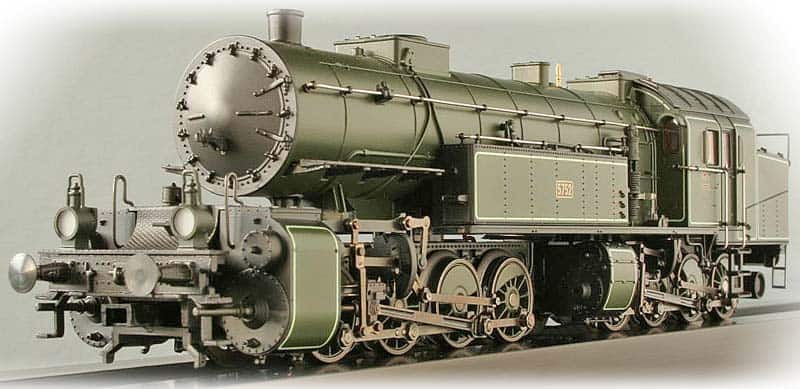
Yep, a D′Dh4vtG, not a 0-8-8-0. In exchange for losing simplicity, you get a lot more information. D′Dh4vtG tells you that the steam locomotive in question has no front leading axle, four driving axles in a bogie, four more driving axles mounted in the frame (so it is a Mallet articulated locomotive), with superheated steam, a four-cylinder, compound (double steam expansion), tank locomotive and finally, it is used for freight trains.
The Europeans, and much of the rest of the world, are correct… UIC Notation is certainly not as simple as Whyte Notation. Now, is that a good thing or a bad thing? I’ll leave that up to you. I think we’ll leave the UIC explanation here at SteamGiants for a future article. 🙂 Until then, you can get a crash course on UIC Notation at the German website loco.skyrocket.de.
And, is this obvious?
Whyte Notation does not cover diesel locomotive wheel arrangements. (The UK does still use Whyte to classify small diesel shunters (switchers)). The United States briefly used it to classify early diesels, although the variety of powered and unpowered axles and wheels meant a change to a different system for the US.
Europe and much of the rest of world uses, again, UIC Notation (or as many call it, German Notation) to classify diesel and electric locomotives. The United States, going for simplicity, uses a simplified subset of the UIC Notation for diesel and electric locomotive.
Those intricacies seem like projects for another day. In the meantime we cover many, many steam locomotive wheel arrangement names and steam engines by their common locomotive type name. Just head back to our Wheel Arrangements page.

Railfan and model railroader. Writer and consumer of railroad news and information.



